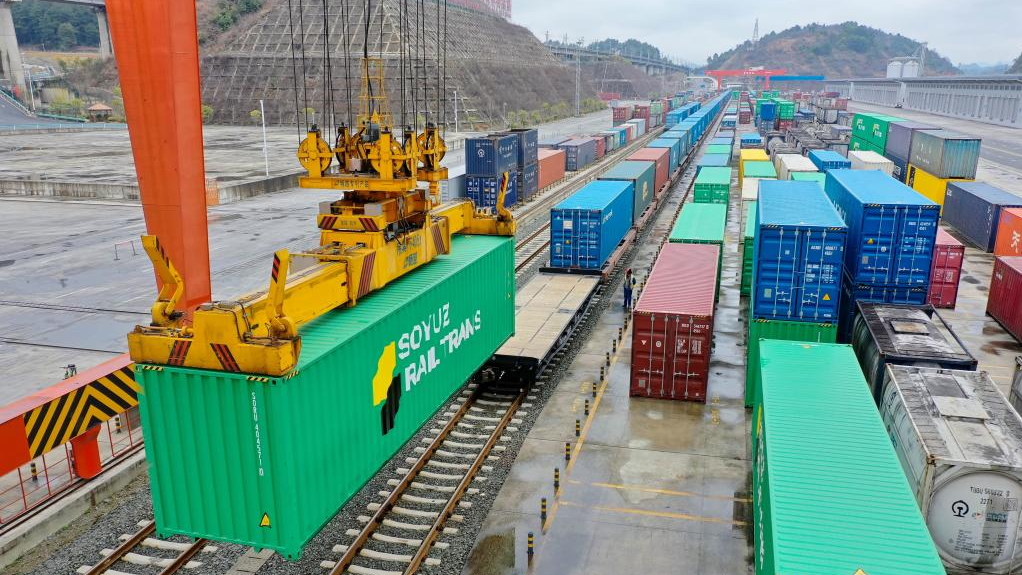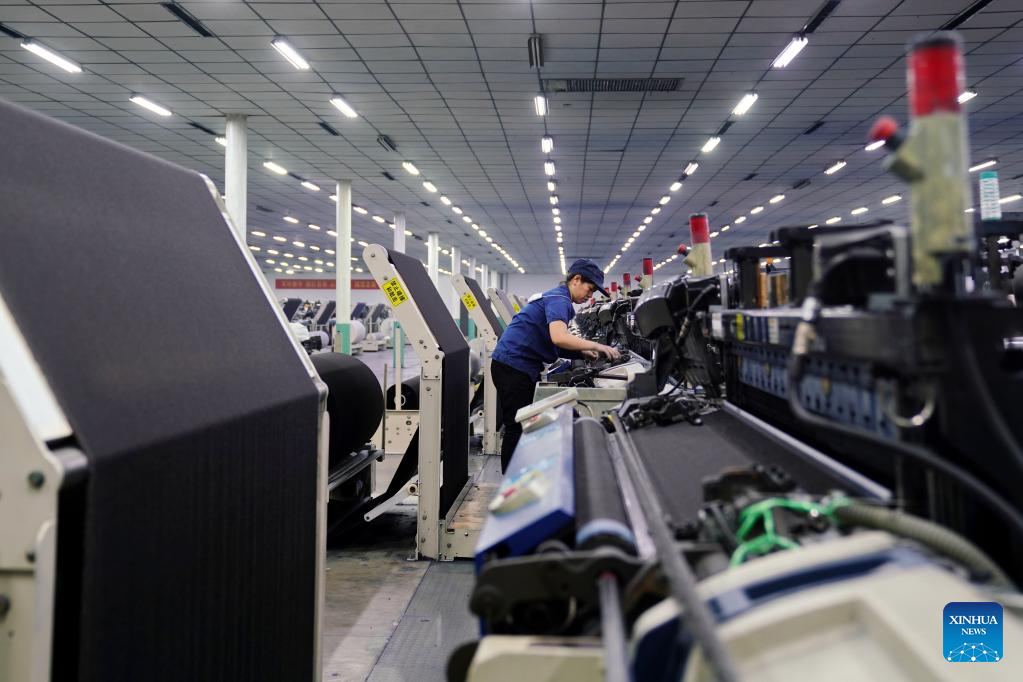
A China-Europe freight train loading containers at Dulaying Station in Guiyang, southwest China's Guizhou Province, February 9, 2023. /Xinhua
A China-Europe freight train loading containers at Dulaying Station in Guiyang, southwest China's Guizhou Province, February 9, 2023. /Xinhua
Editor's note: Wang Dan is the chief economist at Hang Seng Bank (China). The article reflects the author's opinions and not necessarily the views of CGTN.
The latest figures of the consumer price index (CPI) have shown a slight uptick in inflation, which was bolstered by warmer domestic demand since the Chinese New Year. Yet panicking over persistent inflation pressure is premature. The target of the People's Bank of China (PBOC), China's central bank, is to stabilize the price, including inflation and exchange rate. After all, inflation is ultimately a monetary phenomenon. Since 2020 China's monetary policy has been conservative despite the economic slowdown, the exact opposite of the practices of the U.S. and the European central banks. As such, domestic inflation has been consistently below 3 percent in the past three years.
China's inflation has three distinct features. First, consumer inflation has been persistently low in the past three years, with the exception of early 2020 when COVID-19 first started and caused a sharp disruption in supply. Second, the transmission from industrial inflation, as measured by the producer price index (PPI), to consumer inflation, as measured by CPI, has been exceptionally low in the past 10 years. Prices for raw materials and industrial inputs have fluctuated, and yet failed to translate into prices of consumer goods. Many changes in input costs were absorbed by producers, driving profit margins to change. At the same time, prices for most consumer goods have stayed stable. Third, much of the inflation cycle in the past decade was driven by pork prices. The most recent food price peak was due to the breakout of the African swine fever around 2018. Once the virus was under control, the pork cycle has gone down. More Chinese companies have invested in pork production since then, contributing to higher supplies of pork in addition to the traditional hog farms.
One prevailing concern in the market now is whether the inflationary pressure could be transferred from Western countries into China. Thus far this hasn't happened. The U.S. inflation was driven by wage increases as well as the shortage in goods supply, on top of an overly generous stimulus package for COVID-19 relief. The woe of European inflation was mainly due to the Ukraine crisis. China's monetary policy is more or less independent of the Western monetary cycle. In the bulk part of 2021 and 2022, the PBOC controlled money and credit tightly to prevent housing bubbles while the U.S. was aggressively easing the money supply. While the Fed continued its tightening cycle since 2022 to contain inflation, China began to show signs of loosening its monetary supply to provide more liquidity for its economic recovery.

A worker works in a textile company in Xingtai, north China's Hebei Province, February 6, 2023. /Xinhua
A worker works in a textile company in Xingtai, north China's Hebei Province, February 6, 2023. /Xinhua
China's exceptional production capacity has been another important factor to contain inflation. Almost all industrial sectors are subject to an overcapacity problem. Since 2015, China has stepped up efforts to cut capacity in polluting industries, causing a contraction in coal and steel. While the prices for new energy and clean technology are coming down, the coal prices have gone up. Regulators since 2020 have attempted to put a price ceiling on energy while encouraging the expansion of the clean grid. Currently, the unit price of solar electricity is close to coal-powered electricity, which has helped to boost the power supply without using more coal. Emerging industries such as new energy vehicles need more metals and minerals, which have driven up prices for raw materials, particularly metals. We expect such upward pressure in industrial inputs to sustain in the coming years as the world accelerates its energy transition.
Depending on their positions along the supply chain, companies face distinct inflation pressure. The upstream industries, for instance, mining or energy, are dominated by state-owned enterprises (SOEs) and face mainly industrial inflation. In contrast, the downstream factories and consumer-facing companies are mostly privately owned and face consumer inflation. The nominal borrowing rate for SOEs has already been much lower than the private-owned enterprises (POEs). In 2021-2022, PPI has been much higher than CPI. It is the real interest rate (nominal rate minus inflation) that matters for real investment. As a result, the state sector faces a much lower real interest rate than the private sector. The structural skew in the real borrowing rate has depressed the recovery of the POEs, which are dominated by small and micro firms. Rising inflation in China at present is not a bad thing. Rather, it would be a clear signal that the domestic demand is improving, a positive sign for small businesses. Higher inflation, as long as it's not excessive, will help improve the balance sheet by reducing the real debt burden for both households and corporates.
In most months of 2022, deflation was a real concern due to weak demand. The beginning of 2023 was a start to normalize economic activities. The latest data nonetheless suggested some weakness in the labor market, reflected by lower rental prices. Migration flows are picking up but remain lukewarm nationwide, which has exacerbated the labor shortage in big cities. Factory gate prices continued to contract, due to cheaper raw materials. We expect producer prices to pick up as affordable housing-related construction starts and fiscal stimulus kicks in, which will drive up demand for factor inputs. Monetary policy is likely to relax more in the coming months to counter the deflation pressure as well as the yuan appreciation. Inflation for the full year in 2023 will nonetheless sit comfortably below the official target.
(If you want to contribute and have specific expertise, please contact us at opinions@cgtn.com. Follow @thouse_opinions on Twitter to discover the latest commentaries in the CGTN Opinion Section.)